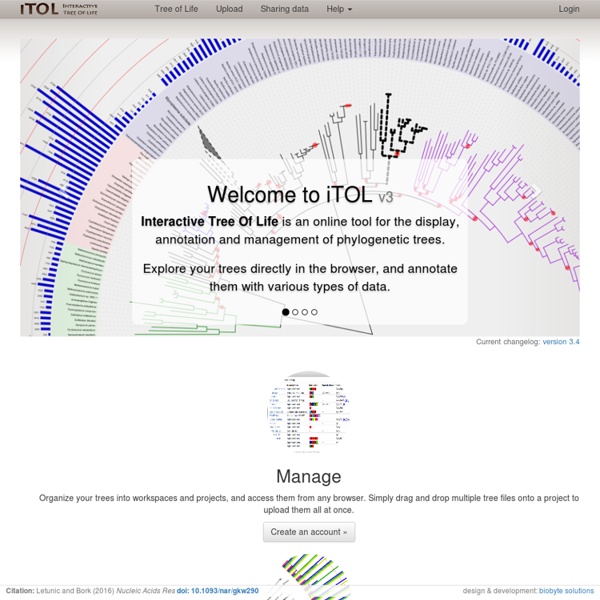iTOL: Interactive Tree Of Life

I'm Dr. Josiah Zayner, former Scientist at NASA turned bioHacker who recently attempted a full-body microbiome transplant, Ask me Anything : IAmA
A Bitter Pill
By Arielle Duhaime-Ross | Photography by Vjeran Pavic Human feces floated in saline solution in a mortar, on a marbled countertop, in a dimly lit kitchen in Burlingame, California. A bottle of ethyl alcohol, an electronic scale, test tubes, and a stack of well-worn pots and pans lay nearby. The stove light illuminated the area as Josiah Zayner crushed the shit with a pestle, creating a brownish-yellow sludge. "I think I can feel something hard in there," he said, laughing. It was probably vegetables — "the body doesn’t break them down all the way." This heralded the beginning of Zayner’s bacterial makeover. Over the course of the next four days, Zayner would attempt to eradicate the trillions of microbes that lived on and inside his body — organisms that helped him digest food, produce vitamins and enzymes, and protected his body from other, more dangerous bacteria. Zayner unwrapped a brand-new syringe and filled its barrel with the brownish liquid. So far, so good.
Related:
Related:



